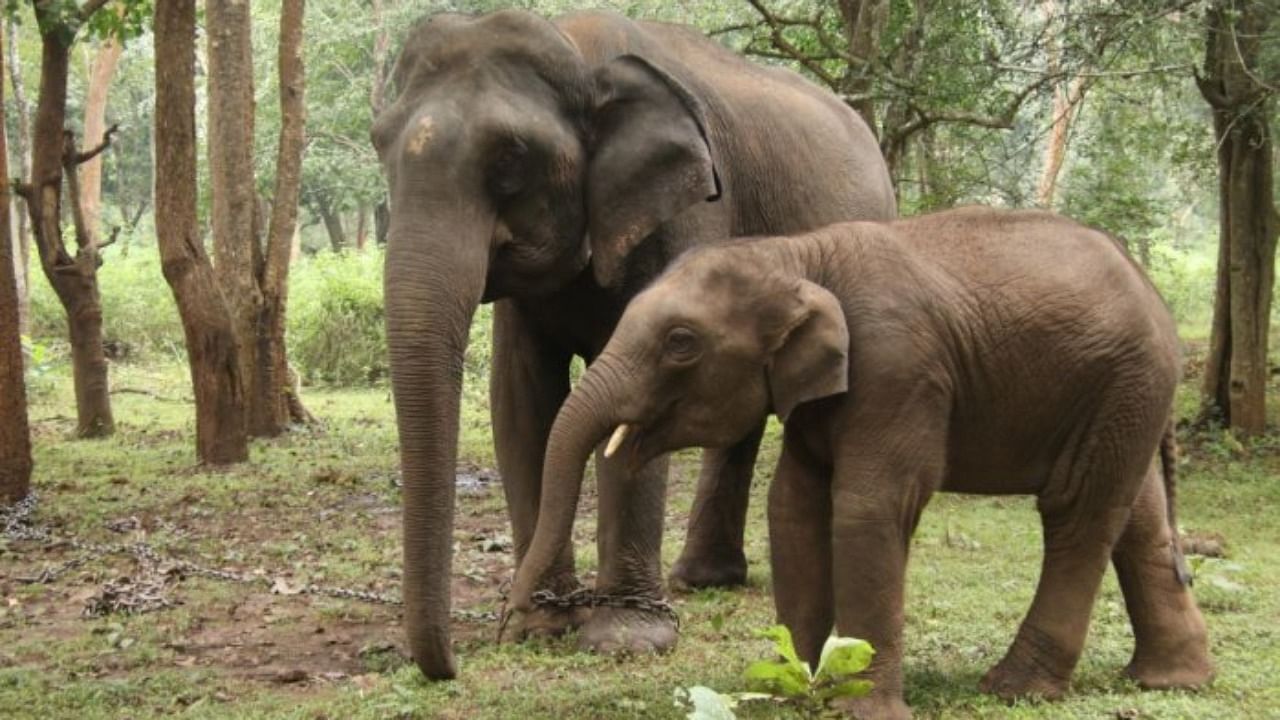
The amendment to Indian Wildlife (Protection) Act, 2021, was introduced and passed in the Lok Sabha and has been referred to a Parliament committee. It is in the public domain for comments. This amendment aims for “conservation, protection and management of wildlife” from the earlier “protection of wild animals, birds and plants”.
Section 2-I6A defines exotic and invasive species of animals and plants whose induction or spread may adversely affect animals, plants and their habitats, with a provision in Sec-62A to control, check, regulate and also destroy such alien species. It is very innovative to check and control invasive, exotic weeds such as lantana, eupatorium and parthenium in protected areas affecting the carrying capacity of the habitats in terms of fodder, space, regeneration of trees and cause of fires. Section 6A, an addition, has given powers to the state wildlife boards to constitute “standing committees” for the purpose of exercising powers and performing boards’ duties as may be delegated to it by the Board, with sub-committees along the lines of the National Board of Wildlife, whose standing committees’ powers too have been enhanced.
This section seems to be there for the purpose of speeding up forest clearance for development projects in wildlife habitats and to frame management policies. Section-28 (b) has been amended to grant permission for film-making without causing any adverse impact to habitat/wildlife. Film shooting was banned in 1978 to avoid accidents and tragedies. It is not a welcome move since protected areas are already overcrowded with tourists. Section 33 has been amended to vest with the chief wildlife warden the power to manage sanctuaries in accordance with management plans approved by him as per the guidelines of the Central government and with consultation of gram sabhas, wherever such sanctuaries fall, under the “Recognition of Forest Rights Act, 2006”. Similarly, construction activities including government lodges are restricted, which is a positive step.
Other amendments such as gun licence around protected areas (Pas) has been restricted up to 10 km radius against 5 km earlier. Wild animals involved in crimes have to be nursed in zoos or rescue centres till they are released into their habitats. The certified owner of a live elephant can transport it without permits as per the procedure prescribed.
Chapter VB: Regulation of International Trade in Endangered Species of Wild Fauna and Flora as per Convention on International Trade in Endangered Species (CITES) vide Sections-49D to 49R to deal with the breeding, conservation, trade-in import, export, re-export etc of schedule fauna and flora has been added as a new chapter with power to the Central government to appoint “Management Authority” with paraphernalia. It also provides for a new department to deal with CITES, hitherto handled by the Customs Department.
Increase in fines
Penalties in Section-51: The term of imprisonments remains the same but the fines have been increased from Rs 10,000 to Rs 25,000 and from Rs 25,000 to 1 lakh. Compounding power under Sec 54 has been increased from Rs 25,000 to Rs 5 lakh. The schedules of animals, birds, reptiles, amphibians fishes and invertebrates; vermin and plants in Schedules-I, II part I, II part II, III, IV, V of the Act have been reduced to Schedule-I, II, III and Schedule-V vermin dropped to declare when found necessary.
Schedule-IV has been added pertaining to CITES with Appendices I, II, III for details of fauna, flora and their origins to guide prosecution Section 5I (I) proviso (ii); accordingly, changes have been made in the corresponding sections of the Act. Schedules have been made with simple lists of species of fauna and flora with local and scientific names. Under Schedule-I & II, a total of 172 mammals have been listed followed by birds (976), reptiles (65), amphibians (6), fish (26), insects (121), crabs (3), corals (388), mollusks (24), holothurians (32) and sponges (10). Under Schedule-III, 18 plants have been listed, while under Schedule-IV, with Appendices-I, II, III, a total of 368, 497, 217 species have been listed, respectively.
This amendment has also sought to address the anomalies found in the Schedules of animals listed in the Act, some with local names, some with scientific names, some with both, which are most confusing for field officers to take cognisance of the offences and to approach the courts. I noticed these lacunae while identifying each animal with a schedule number to show its status in protection for my Hand-Book of Indian Wild Animals. I made a list of such lacunae and submitted two memorandums to the Prime Minister to set right the anomalies in the Schedules of the Wildlife Act, 1972, in 2016 and got an appreciation letter from the Union Ministry of Environment.
Now, I am happy that most of my suggestions have been accepted and the schedules of animals are updated. For example, alpine musk deer, the state animal of Uttarakhand, was missing. It has been included in Schedule-I. Similarly, with regard to whales and dolphins, only a few were named in the Schedules earlier; now, a total of 17 whales and 11 dolphins have been listed in Schedule-I. Birds like house sparrow, eagles/kites, lapwings, ibis, terns, frogmouths and wagtails; some reptiles, fishes, frogs, missing earlier, are now listed.
In a nutshell, this amendment is more technical and the need of the hour is to plug loopholes in the field of wildlife protection, conservation and management. It opens an era of protection for the aquatic/marine mammals, reptiles, fishes and other invertebrates since the wildlife wing has to take action to monitor coasts to safeguard marine fauna, hitherto neglected. The trade of animals and their parts will be put under strict vigilance with the invoking of the CITES-Management Authority under this Act to strengthen the protection measures to wildlife. This amendment deserves to be praised in the interest of wildlife.
(The writer is an IFS officer (retd) and a freelance writer on wildlife, forestry and environment)